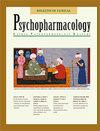Comparison of Clinical Characteristics of Patients on whom Electroconvulsive Therapy was Applied as Inpatient and Outpatient
Q Medicine
Klinik Psikofarmakoloji Bulteni-bulletin of Clinical Psychopharmacology
Pub Date : 2016-11-08
DOI:10.5455/BCP.20151011110055
引用次数: 1
Abstract
Objective: Electroconvulsive therapy (ECT) is an efficient and reliable somatic treatment used to treat severe mental disorders. ECT procedure is generally performed by hospitalizing the patient in our country (Turkey). However, there is no obligation to perform ECT by hospitalization, as ECT may be performed without hospitalizing the patient. Outpatient ECT gradually increases during acute and maintenance treatment. Outpatient ECT provides some advantages, such as reduced disruption in social and professional functionality and decrease in treatment costs. Studies that compare acute outpatient ECT and ECT applied after hospitalization are limited. In the present study, we aimed to review clinical characteristics of acute ambulatory ECT and ECT applied by hospitalization comprehensively and retrospectively. Methods: Inpatients and outpatients that received ECT in the Psychiatry Clinic of Dicle University between 2011 and 2014 were enrolled in the present study. Patients’ files between aforementioned years were reviewed retrospectively and data including patient age, gender, diagnosis according to DSM system, hospitalization period, whether ECT was applied, number of ECT sessions, and whether ECT was performed as an inpatient or outpatient procedure were recorded. For the patients who were hospitalized multiple times, each hospitalization was regarded as a different patient and data were assessed independently. For the outpatients who received ECT, all separate ECT sessions were added and ECT count was determined. Those who received maintenance ECT sessions were not included in the outpatient ECT group. Patients who received ECT by acute referral as outpatients were included in this group. Results: Between 2011 and 2014, 904 patients were admitted to the Psychiatry Clinic of Dicle University, Faculty of Medicine , of which 138 received ECT treatment. We also included in the study an additional 38 outpatients who received acute ECT. Inpatients of our clinic in application to ECT were rates of 15.3%. There was no statistically significant difference detected between age, number of ECT sessions applied, diagnosis, and gender of admitted inpatients and outpatients (p>0.05). Conclusions: In our study clinical characteristics of inpatients and outpatients subjects who admitted in order to practiced the ECT were determined to be similar. We believe that an efficient treatment method may be presented to the patients by including acute outpatient ECT more frequently in the treatment plan from physicians.电休克治疗住院与门诊患者的临床特点比较
目的:电休克治疗是治疗严重精神障碍的一种有效、可靠的躯体治疗方法。在我国(土耳其),电痉挛治疗通常是在病人住院时进行的。然而,没有义务在住院期间进行电痉挛治疗,因为电痉挛治疗可以在不住院的情况下进行。门诊电痉挛在急性和维持治疗期间逐渐增加。门诊电痉挛治疗有一些优点,如减少对社会和专业功能的干扰,降低治疗费用。比较急性门诊电痉挛和住院后应用电痉挛的研究是有限的。在本研究中,我们旨在全面回顾急性门诊电痉挛治疗和住院电痉挛治疗的临床特点。方法:选取2011 - 2014年在迪克尔大学精神病学门诊接受电痉挛治疗的住院和门诊患者为研究对象。回顾性回顾上述年份的患者档案,记录患者的年龄、性别、根据DSM系统诊断、住院时间、是否使用ECT、ECT次数、是否作为住院或门诊手术。对于多次住院的患者,每次住院被视为一个不同的患者,数据被独立评估。对于接受ECT的门诊患者,将所有单独的ECT疗程加起来,并确定ECT计数。接受维持性电痉挛治疗的患者不包括在门诊电痉挛治疗组。经急诊转诊作为门诊病人接受电痉挛治疗的患者被纳入这一组。结果:2011年至2014年,迪克尔大学医学院精神病学门诊共收治904例患者,其中138例接受了ECT治疗。我们还纳入了另外38名接受急性电痉挛治疗的门诊患者。我院住院患者应用电痉挛治疗的比例为15.3%。住院与门诊患者年龄、电痉挛次数、诊断率、性别差异无统计学意义(p>0.05)。结论:在我们的研究中,住院病人和门诊病人的临床特征是相似的。我们认为,在医生的治疗计划中更频繁地纳入急性门诊电痉挛治疗可能是一种有效的治疗方法。
本文章由计算机程序翻译,如有差异,请以英文原文为准。
求助全文
约1分钟内获得全文
求助全文
来源期刊
CiteScore
0.34
自引率
0.00%
发文量
0
审稿时长
6-12 weeks

 求助内容:
求助内容: 应助结果提醒方式:
应助结果提醒方式:


